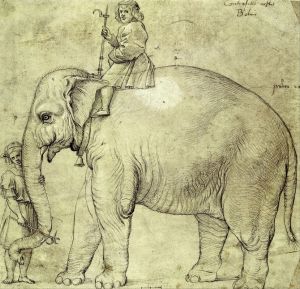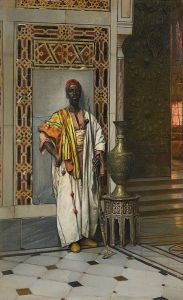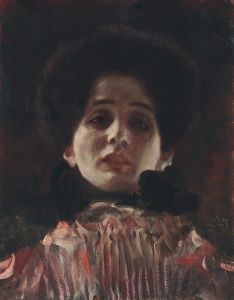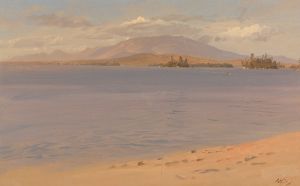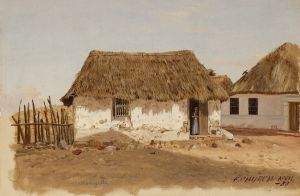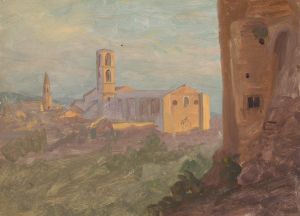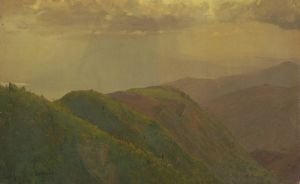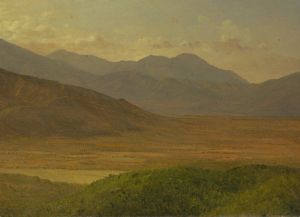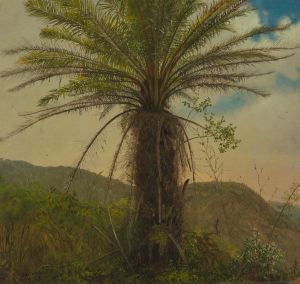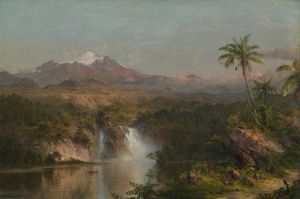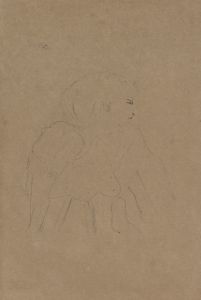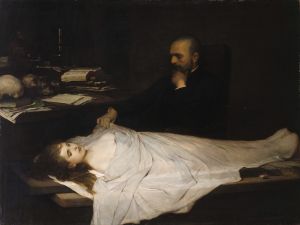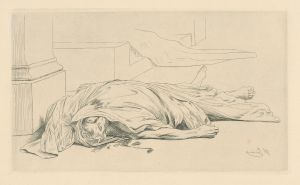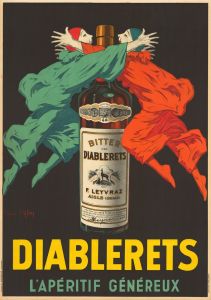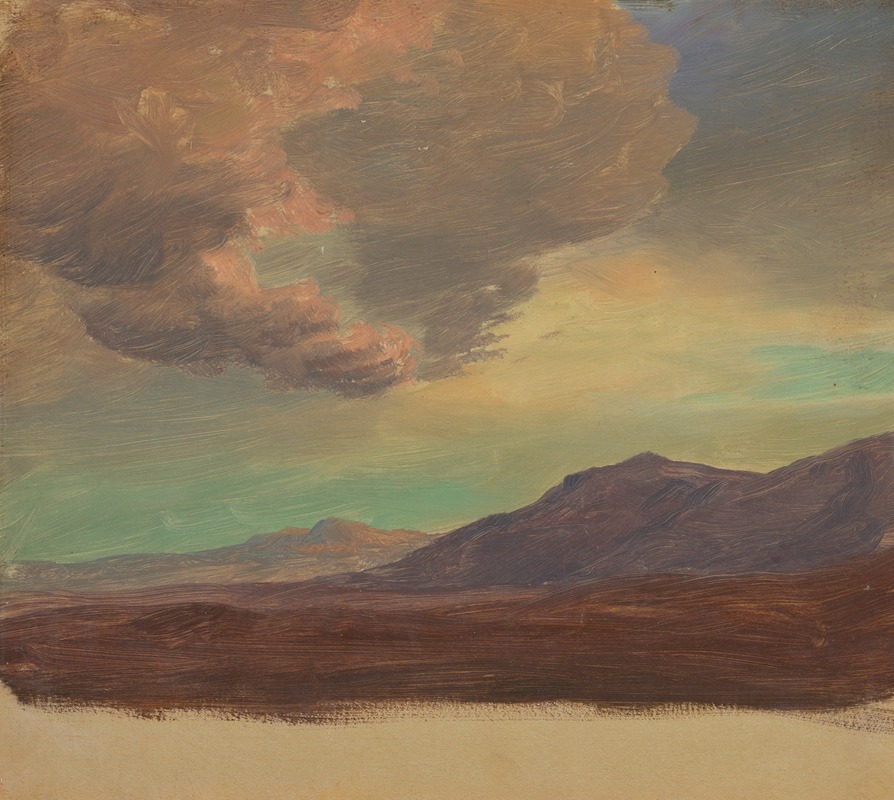
Landscape, near Palestine or Syria
A hand-painted replica of Frederic Edwin Church’s masterpiece Landscape, near Palestine or Syria, meticulously crafted by professional artists to capture the true essence of the original. Each piece is created with museum-quality canvas and rare mineral pigments, carefully painted by experienced artists with delicate brushstrokes and rich, layered colors to perfectly recreate the texture of the original artwork. Unlike machine-printed reproductions, this hand-painted version brings the painting to life, infused with the artist’s emotions and skill in every stroke. Whether for personal collection or home decoration, it instantly elevates the artistic atmosphere of any space.
Frederic Edwin Church, a prominent figure in the Hudson River School of American landscape painting, created "Landscape, near Palestine or Syria" in 1870. This painting is a testament to Church's fascination with the exotic and his dedication to capturing the grandeur of the natural world. Known for his detailed and dramatic landscapes, Church was deeply influenced by his travels and the scientific exploration of his time.
Church embarked on a journey to the Middle East in 1867, which profoundly impacted his artistic vision. This trip was part of a larger trend during the 19th century when artists and scholars were increasingly interested in the Orient, a term used at the time to describe the regions of the Middle East and North Africa. Church's travels took him through areas that are now part of modern-day Lebanon, Israel, Palestine, and Syria. The landscapes he encountered during this journey provided rich material for his work upon his return to the United States.
"Landscape, near Palestine or Syria" reflects Church's ability to blend his observations of the natural world with a sense of the sublime. The painting showcases a panoramic view, a hallmark of Church's style, which invites viewers to immerse themselves in the vastness and beauty of the scene. The composition is meticulously detailed, capturing the varied textures and colors of the terrain. Church's use of light and shadow adds depth and drama to the painting, enhancing the viewer's experience of the landscape's majesty.
Church's work is characterized by its precision and attention to detail, qualities that are evident in this painting. He often conducted extensive research and made numerous sketches before completing a final piece. This method allowed him to accurately depict the geographical and atmospheric conditions of the locations he painted. In "Landscape, near Palestine or Syria," Church's dedication to realism is evident in the careful rendering of the landscape's features, from the rugged mountains to the expansive sky.
The painting also reflects the influence of the scientific and cultural interests of the time. Church was a member of the American Geographical Society and was deeply interested in the natural sciences. His paintings often incorporated elements of geology, botany, and meteorology, reflecting his desire to educate and inspire his audience. In this work, the geological formations and plant life are depicted with scientific accuracy, demonstrating Church's commitment to portraying the natural world truthfully.
"Landscape, near Palestine or Syria" is a significant example of Church's work during the later period of his career. It illustrates his continued interest in exploring new landscapes and his ability to convey the awe-inspiring beauty of the natural world. The painting remains an important part of Church's legacy, showcasing his skill as an artist and his contribution to the American landscape tradition.
Today, Frederic Edwin Church is celebrated as one of the leading figures of the Hudson River School, and his works are held in high regard for their artistic and historical significance. "Landscape, near Palestine or Syria" is a testament to Church's enduring influence and his ability to capture the essence of the landscapes he encountered during his travels.





